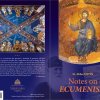Jelena Rosich (November 3, 1969 Kikinda, Serbia) is a writer of short stories. She graduated from the University of Novi Sad in English Language and Literature in 1992, and immigrated with her family to the United States in 1998.
Her first book of short stories "Dalilin prsten" was published in 1993 (Matica Srpska, Novi Sad) and her second book of stories "Dan kada je Miz Lili postala ono sto je oduvek bila" (Arhipelag, Beograd 2012) won the award "Stevan Sremac" for the book of the year in Serbian language.
.Jelena's work is included in several anthologies of short stories such as "Mala kutija" by Mihajlo Pantic (Jugoslovenska knjiga, Beograd 2001), and "Tajno drustvo" by Vasa Pavkovic (Kov, Vrsac 1997).
She lives with her husband and four children in Mequon, Wisconsin.






